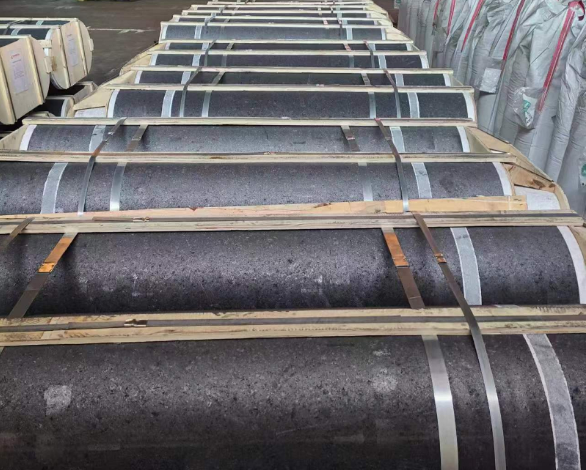Key words: Graphite Electrodes, Refractory Material(brick, Mix), Copper Mould Tube, Mill Roll
+86 186 4091 3888
Key words: Graphite Electrodes, Refractory Material(brick, Mix), Copper Mould Tube, Mill Roll
+86 186 4091 3888
May. 07, 2024
Carbon and graphite electrodes are distinct types of electrodes employed across various industrial processes, particularly in metallurgy and electrical applications. Despite both being crafted from carbon materials, they diverge in properties and applications owing to disparities in composition and structure.
Composition: Carbon electrodes commonly comprise a blend of carbonaceous materials, such as coal tar pitch and petroleum coke. These electrodes typically possess a lower carbon content compared to graphite electrodes.
- Carbon electrodes find primary application in electric arc furnaces (EAFs) utilized for steel and metal production. Additionally, they are employed in high-temperature processes like the manufacture of calcium carbide and ferroalloys.
- With the ability to withstand high temperatures and resist thermal shock, carbon electrodes excel in the extreme conditions encountered in EAF operations.
- Despite being less costly than graphite electrodes, carbon electrodes have a shorter lifespan and exhibit lower electrical conductivity.
Carbon electrodes serve as the primary conductive material for electric arcs and furnaces. When connected to the furnace's power supply, these electrodes generate intense heat, melting metal alloys and other materials like yellow phosphorus. They exhibit excellent resistance to extremely high temperatures and ensure even distribution of current throughout the system. Production costs are minimized since their manufacturing process doesn't necessitate graphitization.

Graphite electrodes are mainly used in electric arc furnace. They are presently the only products available that have the high levels of electrical conductivity and the capability of sustaining the extremely high levels of heat generated in EAF. Graphite electrodes are also used to refine steel in ladle furnaces and in other smelting processes. Graphite electrodes are divided into 4 Types: UHP Graphite electrodes, SHP Graphite electrodes, HP Graphite electrodes, RP Graphite electrodes.
Composition: Graphite electrodes are crafted from high-purity graphite, a crystalline form of carbon. These electrodes boast a significantly higher carbon content when compared to carbon electrodes.
- Graphite electrodes are widely employed in electric arc furnaces (EAFs) and ladle furnaces for steel and metal production. Additionally, they find application in EAFs for the production of ferroalloys, silicon metal, and specialty alloys.
- With exceptional electrical conductivity, high thermal resistance, and mechanical strength, graphite electrodes excel in the demanding conditions of EAF operations.
- Compared to carbon electrodes, graphite electrodes have a prolonged lifespan and demonstrate greater efficiency in high-temperature applications.
Graphite electrodes, utilized in electric arc furnaces for steelmaking, facilitate the generation of an electric arc between iron filings and the electrodes. This arc generates temperatures as high as 3500 degrees Celsius, showcasing graphite's electrical conductivity and robust mechanical strength at elevated temperatures. Graphite remains unchanged during high-temperature melting and exhibits strong corrosion resistance.
Due to its lightweight nature and exceptional thermal stability, graphite finds application in the aerospace industry for rocket engines. Its superior thermal conductivity surpasses that of stainless steel, ferrosilicon, and other metals. However, as a rocket nozzle material, graphite dissipates hot air too rapidly. Moreover, it boasts a low coefficient of linear expansion and remarkable thermal shock resistance, making it the preferred material in the aerospace sector.
In summary, both carbon and graphite electrodes are used as conductive materials in industrial processes, but their specific applications and properties vary. Carbon electrodes are generally less expensive but have limitations in terms of lifespan and electrical conductivity. Graphite electrodes, on the other hand, offer superior performance in high-temperature and high-current applications but are typically more expensive. The choice between the two depends on the specific requirements of the industrial process and cost considerations.

Navigation
Tel:: +86 186 4091 3888
Fax: +86 411 3962 5877
Mobile: +86 186 4091 3888
E-mail: jack@sncarbon.cn
QQ: 695993847
Address: Zhongshan District, Dalian City,116001. China.